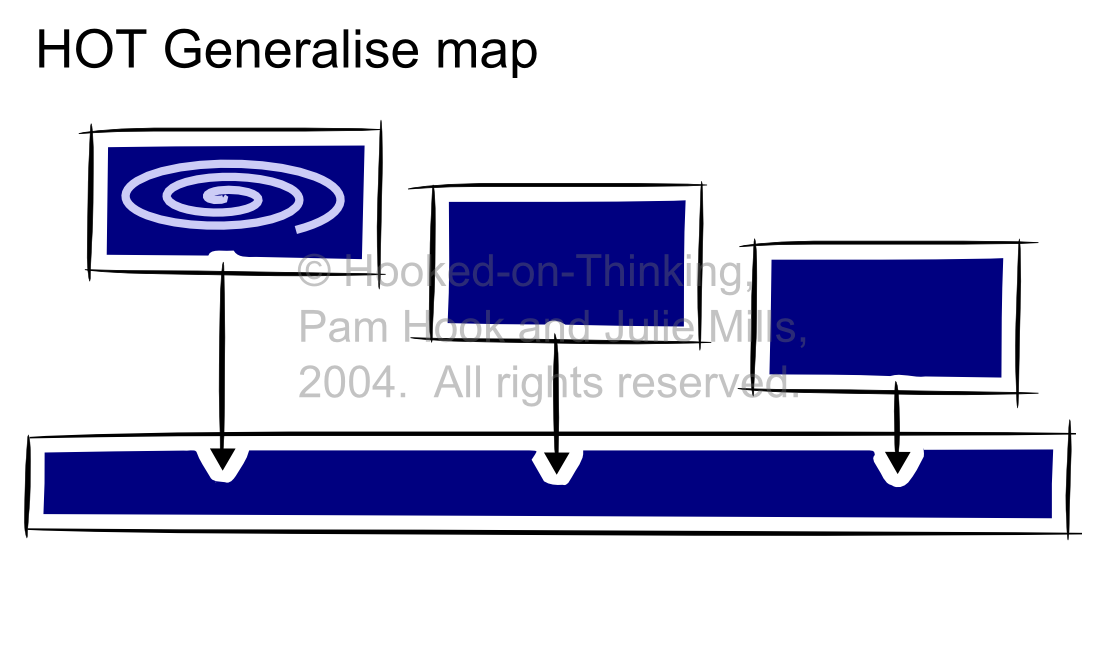HOT SOLO Generalise Map
HOT SOLO Generalise Map
What is it?
The HOT SOLO generalise map and self assessment rubric is used to back up the reliability and validity of a claim.
How to use it?
1. Align the HOT SOLO Generalise Map and self assessment rubric with the identified learning intention. For example, we are learning to make a generalisation about [content] [context].
2. Make a generalisation/claim - or identify a claim in the editorial section of a local paper (print) or reader comments (online).
3. Clarify the meaning of the generalisation/claim.
4. Provide reasons to support the generalisation – e.g. the first “because …” – explain why the claim is reliable.
5. Provide evidence/grounds to support your reasons- e.g. the second “because” – explain why the reason this reason is valid.
6. Evaluate the generalisation.
7. Share the success criteria for making a generalisation in the HOT SOLO generalisation rubric.
8. With reference to the success criteria, create a generalisation statement using the completed HOT SOLO generalisation map. The generalisation can be written, oral or an annotated drawing. This process is iterative and can be repeated whenever new learning occurs enabling the generalisation statement to be improved.
9. Students self assess/peer assess and seek teacher feedback on their generalisation.
10. Students assess their learning outcome for the identified learning intention against the SOLO levels, explain why they have chosen this level of learning outcome for their work (feedback) and suggest where to next steps (feed up).
11. Record this in a student learning log.
HOT SOLO Generalise Self-assessment Rubric
Student Use Examples
